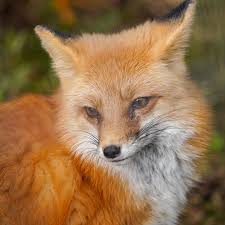Mini Sheet: Natural Parks - Upper Sure Anlier Forest (Burundi 2012)
Natural Parks - Upper Sure Anlier Forest (Burundi 2012)
01 January (Burundi ) within release Natural Parks (2012) goes into circulation Mini Sheet Natural Parks - Upper Sure Anlier Forest face value 6*500 Burundian franc
| Mini Sheet Natural Parks - Upper Sure Anlier Forest in catalogues | |
|---|---|
| Colnect codes: | Col: BI 2012-46 |
Mini Sheet is square format.
No year date inscribed on the counterfeit stamps. Illegal stamps produced in Eastern Europe and distributed by Eastern European counterfeit stamp dealers. Dating on many based on year they first appeared which in this case is 2012. BEWARE of criminal sellers offering them as "issued" in different years other than this. Avoid anyone selling these! From "Natural Parks" series.Also in the issue Natural Parks (2012):
- Mini Sheet - Natural Parks - Burdinale and Mehaigne Valley face value 3*500;
- Mini Sheet - Natural Parks - Burdinale and Mehaigne Valley face value 6*500;
- Mini Sheet - Natural Parks - High Country face value 6*500;
- Mini Sheet - Natural Parks - High Country face value 3*500;
- Mini Sheet - Natural Parks - High Fens-Eifel face value 6*500;
- Mini Sheet - Natural Parks - High Fens-Eifel face value 3*500;
- Mini Sheet - Natural Parks - Hill Country face value 6*500;
- Mini Sheet - Natural Parks - Hill Country face value 3*500;
- Mini Sheet - Natural Parks - Scheldt Plains face value 6*500;
- Mini Sheet - Natural Parks - Scheldt Plains face value 3*500;
- Mini Sheet - Natural Parks - Two Ourthes face value 6*500;
- Mini Sheet - Natural Parks - Two Ourthes face value 3*500;
- Mini Sheet - Natural Parks - Upper Sure Anlier Forest face value 6*500;
- Mini Sheet - Natural Parks - Upper Sure Anlier Forest face value 3*500;
- Mini Sheet - Natural Parks - Viroin-Hermeton face value 6*500;
- Mini Sheet - Natural Parks - Viroin-Hermeton face value 3*500;
Mini Sheet Natural Parks - Upper Sure Anlier Forest it reflects the thematic directions:
Animals are multicellular, eukaryotic organisms of the kingdom Animalia (also called Metazoa). All animals are motile, meaning they can move spontaneously and independently, at some point in their lives. Their body plan eventually becomes fixed as they develop, although some undergo a process of metamorphosis later on in their lives. All animals are heterotrophs: they must ingest other organisms or their products for sustenance.
A flower, sometimes known as a bloom or blossom, is the reproductive structure found in plants that are floral (plants of the division Magnoliophyta, also called angiosperms). The biological function of a flower is to effect reproduction, usually by providing a mechanism for the union of sperm with eggs. Flowers may facilitate outcrossing (fusion of sperm and eggs from different individuals in a population) or allow selfing (fusion of sperm and egg from the same flower). Some flowers produce diaspores without fertilization (parthenocarpy). Flowers contain sporangia and are the site where gametophytes develop. Many flowers have evolved to be attractive to animals, so as to cause them to be vectors for the transfer of pollen. After fertilization, the ovary of the flower develops into fruit containing seeds. In addition to facilitating the reproduction of flowering plants, flowers have long been admired and used by humans to beautify their environment, and also as objects of romance, ritual, religion, medicine and as a source of food.
Foxes are small-to-medium-sized omnivorous mammals belonging to several genera of the family Canidae. They have a flattened skull; upright, triangular ears; a pointed, slightly upturned snout; and a long, bushy tail ("brush").
Insects (from Latin insectum, a calque of Greek ἔντομον [éntomon], "cut into sections") are a class (Insecta) of hexapod invertebrates within the arthropod phylum that have a chitinous exoskeleton, a three-part body (head, thorax and abdomen), three pairs of jointed legs, compound eyes and one pair of antennae. They are the most diverse group of animals on the planet, including more than a million described species and representing more than half of all known living organisms. The number of extant species is estimated at between six and ten million, and potentially represent over 90% of the differing animal life forms on Earth. Insects may be found in nearly all environments, although only a small number of species reside in the oceans, a habitat dominated by another arthropod group, crustaceans. The life cycles of insects vary but most hatch from eggs. Insect growth is constrained by the inelastic exoskeleton and development involves a series of molts. The immature stages can differ from the adults in structure, habit and habitat, and can include a passive pupal stage in those groups that undergo 4-stage metamorphosis (see holometabolism). Insects that undergo 3-stage metamorphosis lack a pupal stage and adults develop through a series of nymphal stages. The higher level relationship of the Hexapoda is unclear. Fossilized insects of enormous size have been found from the Paleozoic Era, including giant dragonflies with wingspans of 55 to 70 cm (22–28 in). The most diverse insect groups appear to have coevolved with flowerin plants.
Flora is the plant life occurring in a particular region or time, generally the naturally occurring or indigenous—native plant life. The corresponding term for animal life is fauna. Flora, fauna and other forms of life such as fungi are collectively referred to as biota. Sometimes bacteria and fungi are also referred to as flora, as in the terms gut flora or skin flora.





